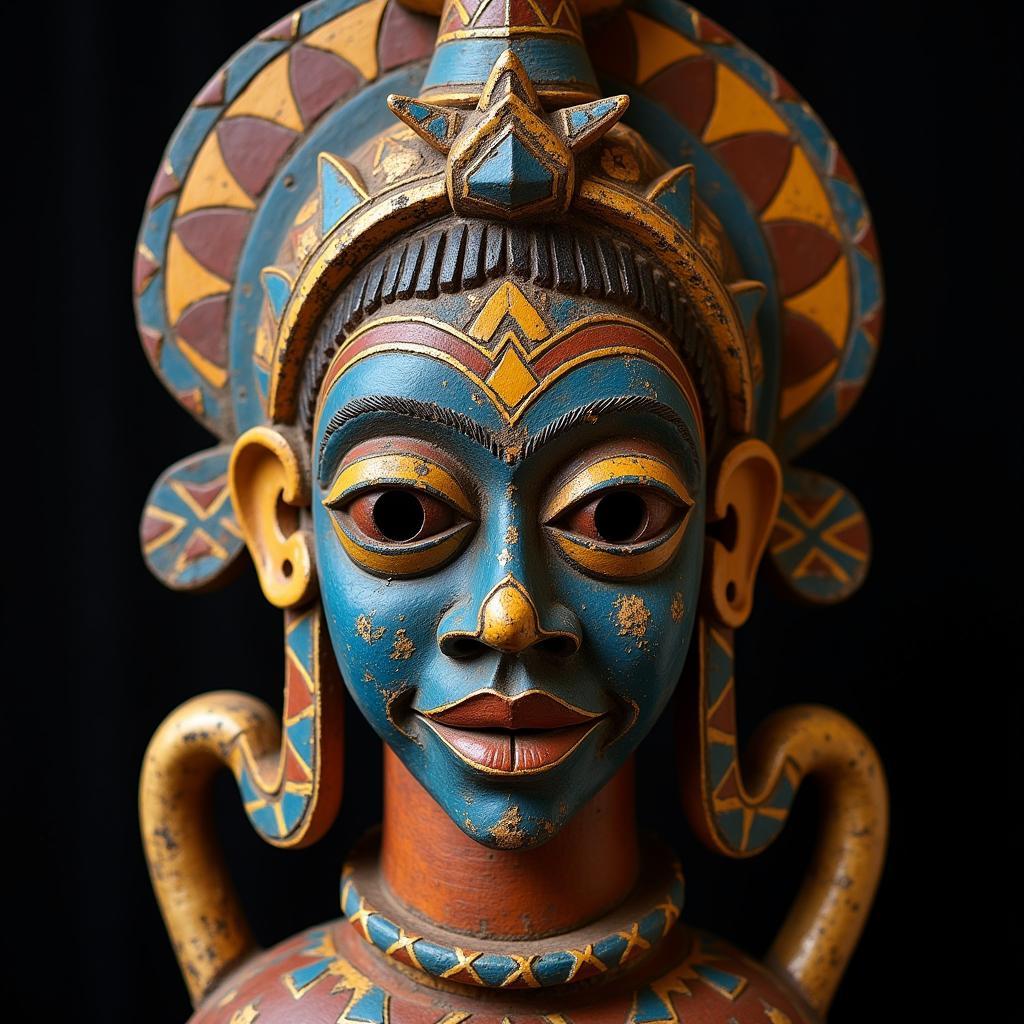Exploring the Significance of the African G-String
The African g-string, far from being a simple garment, holds a rich and complex history intertwined with cultural traditions, social structures, and beliefs across the continent. This article delves into the fascinating world of the African g-string, examining its various forms, meanings, and significance in different African cultures.
More Than Just Clothing: The Cultural Significance
While the term “g-string” might evoke certain modern connotations, in the context of African cultures, it represents a diverse range of garments with deep-rooted cultural significance. These garments, often made from materials like leather, cloth, or beads, are far more than just undergarments. They serve as:
- Symbols of Identity and Status: In many African societies, the type of g-string worn, its material, and embellishments can indicate a person’s age, social standing, marital status, or even their clan or tribe.
- Elements of Traditional Attire: G-strings often form integral parts of elaborate traditional outfits worn during ceremonies, rituals, and festivals. They complement other adornments, such as headdresses, jewelry, and body paint, to create visually striking ensembles.
- Expressions of Masculinity and Femininity: The design and manner of wearing a g-string can accentuate specific gender roles and aesthetics. For instance, men’s g-strings might emphasize strength and virility, while women’s versions could highlight fertility and grace.
A Journey Through History: Tracing the Origins
Tracing the precise origins of the African g-string proves to be a complex task due to limited historical documentation. However, evidence suggests that loincloths and similar garments have been worn in Africa for millennia. Archaeological discoveries, such as ancient rock paintings and sculptures, provide glimpses into early forms of clothing and adornment.
Some theories posit that the use of g-strings might be linked to:
- Practical Considerations: In tropical climates, minimal clothing provided comfort and allowed for ease of movement.
- Cultural Beliefs and Taboos: Certain body parts might have been considered sacred or private, leading to the development of garments like the g-string for coverage.
- Trade and Cultural Exchange: The exchange of ideas and materials between different African groups and with other civilizations could have influenced the evolution of clothing styles.
The African G-string in a Modern Context
While Western clothing has become increasingly prevalent across Africa, the traditional g-string continues to hold its ground in many communities.
- Preserving Cultural Heritage: Many groups actively preserve their traditional clothing as a way of maintaining their cultural identity and passing down heritage to younger generations.
- Tourism and Cultural Performances: G-strings are often featured in cultural performances and events aimed at tourists, showcasing the richness and diversity of African traditions.
- Reinterpretations and Contemporary Fashion: Some African designers are incorporating elements of traditional g-strings into modern fashion, creating contemporary pieces that pay homage to their cultural roots.
The African G-string: A Symbol of Resilience and Cultural Pride
The African g-string, in its various forms and significances, serves as a powerful reminder of the continent’s rich cultural tapestry. It is a testament to the resilience of tradition, the diversity of African societies, and the enduring power of clothing as a form of cultural expression.
 African G-String in Modern Fashion
African G-String in Modern Fashion
Frequently Asked Questions About the African G-String
1. Is the term “g-string” considered offensive in the context of African cultures?
While the term might carry certain connotations in Western contexts, it is important to approach discussions about traditional African garments with sensitivity and respect. Using respectful language and acknowledging the cultural significance of these garments is crucial.
2. Are there different names for the g-string in different African languages?
Yes, the g-string is known by various names across different African languages, reflecting the linguistic and cultural diversity of the continent.
3. Are g-strings still worn in everyday life in Africa?
While Western clothing has become more prevalent, g-strings are still worn in certain communities for everyday activities, particularly in rural areas where traditional lifestyles are more common. However, they are more frequently seen during cultural ceremonies, rituals, and festivals.
4. Where can I learn more about specific types of African g-strings?
Museums specializing in African art and culture, ethnographic texts, and online resources dedicated to African textiles and clothing can provide valuable insights.
5. Are there any ethical considerations to keep in mind when purchasing or photographing African g-strings?
It’s crucial to be mindful of cultural appropriation and to ensure that any purchases support local artisans and communities. When photographing people wearing traditional attire, always ask for permission and be respectful of their customs and beliefs.
Need More Information on African Culture?
We encourage you to explore other captivating articles on our website:
- Learn about the ancient history of human migration in “African Exodus the Origins of Modern Humanity Chris Stringer.”
- Dive into the vibrant world of music with “African Banda.”
For any inquiries or assistance, our dedicated team is available 24/7. Contact us at +255768904061, [email protected], or visit our office at Mbarali DC Mawindi, Kangaga, Tanzania.
